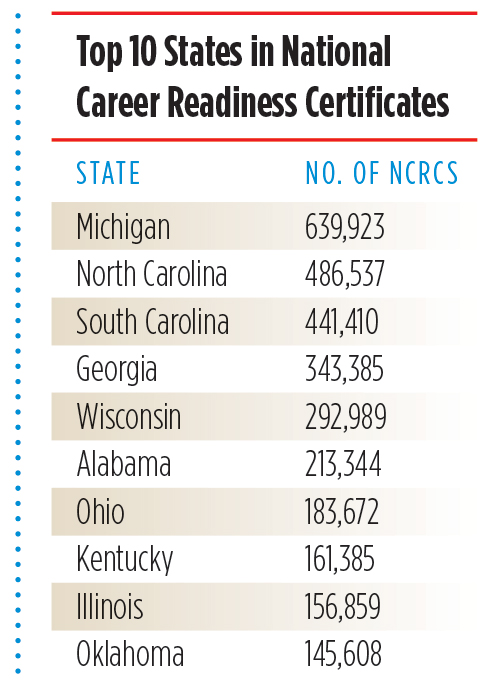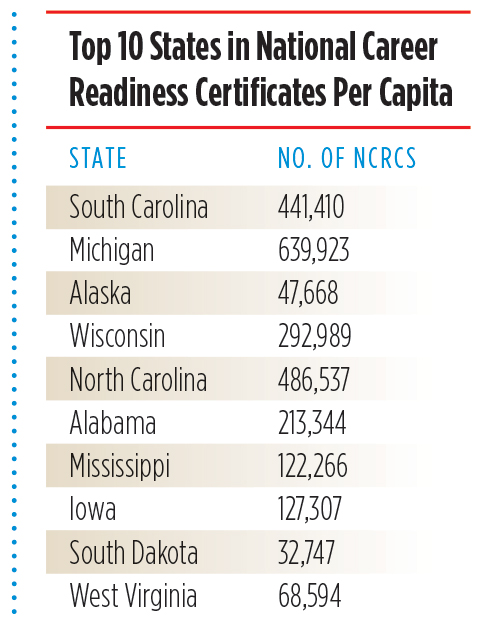Like a perennial college student accumulating degrees but no career, business parks and industrial sites can pile up credentials, and pay good money to do it. That’s thanks to the plethora of site certification programs administered by states and utilities, usually with a third-party consulting firm delivering the stamp of approval.
Some worry that these programs aren’t standardized with apples-to-apples data. But the push for comparables may be missing a larger question: Should site certification programs go beyond the geotechnical and hard infrastructure aspects and do better at incorporating workforce, talent and education/training data into the mix?

“Workforce is now the dominant issue in most location decisions. Our clients are getting in front of this issue by providing workforce and related demographic data customized for the industries they are targeting.”
“Yes, absolutely,” says Chris Steele, vice president of Conway Advisory (a sister organization to Site Selection). “The certified site is not worth anything if it’s just focusing on site characteristics. It needs to be able to say what it’s good for, and why. A certified sites program is only helpful if it’s actually telling you a little bit more about what that site gives you.”
“Certification can quickly and often mistakenly become an end-goal, rather than a holistic process to prepare and win projects,” says Beth Land, vice president, Site Selection Group. “Since workforce is driving so many location decisions, economic developers should be focusing and preparing the workforce ecosystem of a site in parallel to the physical site readiness efforts. A classic example is a community spending millions of dollars preparing a megasite for an automotive OEM, when the population density and/or demographics could never support the demands of an OEM. Certification programs that don’t factor workforce into the equation will fall short of having that holistic vision that needed to land a project.”

“Workforce is now the dominant issue in most location decisions, and our clients are getting in front of this issue by providing workforce and related demographic data customized for the industries they are targeting,” says Ron Bertasi, CEO of GIS WebTech, which deploys ESRI technology to create GIS-based web mapping and data solutions for economic developers. “For example, they might include not just skill and wage data specific to the industry, but show it within a customized driving-time analysis reflecting local traffic conditions and commuting patterns, so they can show what the workforce resource is within a 45-minute commute to the site on Monday mornings at 8:00 a.m.”
Now we’re cooking with gas.
Filling the Toolbox
There are other tools waiting to be used. One is the National Career Readiness Certificate program from ACT. As of the end of 2019, ACT had issued more than 4.5 million certificates — a pretty good sample to work with. Shown on p. 222 are the Top 10 states for NCRCs and the Top 10 states for NCRCs per capita. (Hint: If a state appears in both lists, that’s probably a good thing.) As demonstrated in Site Selection’s past coverage, the NCRC data can be broken down by county, metro and micropolitan area as well, and thus applied to a given site’s commute radius.

Another tool with which to supplement your favorite certified site program is the Talent Hub designation from the Lumina Foundation with support from The Kresge Foundation. Awards are given to communities that have shown the ability to significantly increase the numbers of residents with college degrees, certificates, or other credentials beyond a high school diploma. The program now includes 26 communities. They include Albuquerque’s Mission: Graduate’s “Adult Transitions to College” strategy; Bridging Richmond — a collaboration among John Tyler and Reynolds community colleges, Virginia Commonwealth University, TRIO EOC and United Way to accelerate credential attainment; and the Detroit Drives Degrees Education Compact whereby the Detroit Regional Chamber Foundation, Wayne State University and Macomb Community College have aimed to help 35,000 adults with some postsecondary experience complete their education by 2020.
“Talent Hubs are not just trying to be some of the best places to live, work, and learn,” said Jamie Merisotis, Lumina’s president and CEO, when the program awarded $125,000 grants to the new Talent Hubs of Cleveland, Northeast Indiana, Southwest Florida and Tampa Bay in January. “These communities also are taking today’s students and transforming them into tomorrow’s talent.”

